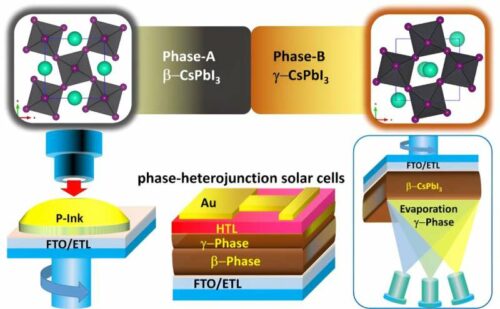Researchers from Chonnam University in South Korea have unveiled a new solar cell design using purely inorganic perovskites.

Solar technologies have become increasingly advanced with the discovery of new photovoltaic materials and designs. While solar cells based on a mixture of organic and inorganic halide perovskite materials have been the topic of numerous research studies and achieved promising performances, these cells are often difficult to fabricate on a large scale.
The researchers from Chonnam University in South Korea have unveiled a new solar cell design using purely inorganic perovskites. These cells promise efficient power conversion and offer easier large-scale fabrication. Traditionally, perovskite solar cells were made using hazardous antisolvents, single junctions, and phases. The team introduced an anti-solvent-free approach using hot air, enabling the creation of the beta (β)-CsPbI3 phase under regular conditions. They added a gamma (γ)-CsPbI3 layer over the β-CsPbI3 layer using a straightforward thermal evaporation technique. These combined phases enhance charge extraction, boosting the cell’s overall power conversion efficiency.
The recent research aimed to develop solar cells derived from inorganic perovskites through an easily scalable method. Using hot-air and thermal evaporation deposition methods, the researchers fabricated their solar cells under normal conditions, eliminating the need for polar solvents. The distinctive feature of their technique is the deposition of both layers without using any anti-solvents.
They produced prototype solar cells with a Power Conversion Efficiency (PCE) of 21.59%. By adding minimal additives, they stabilised the photoactive phase of the absorber layer within the CsPbI3 layer of the cell. Their method utilises an all-inorganic perovskite composition, which is more thermally stable than traditional organic-inorganic hybrid perovskite compositions. This makes their technique ideal for creating durable, long-lasting perovskite modules.
They claim that this could set the stage for creating more solar cells using all inorganic perovskites and other halide perovskite materials. Such advancements could propel these solar cells’ broader acceptance and use.








